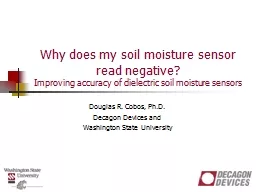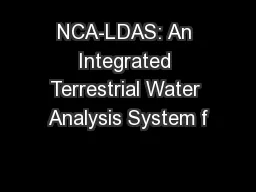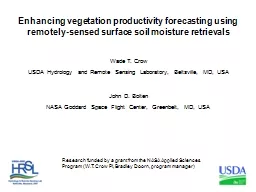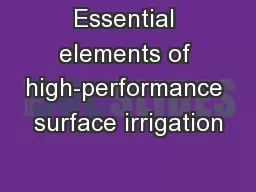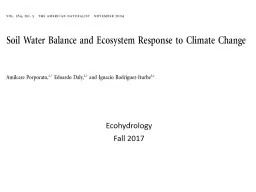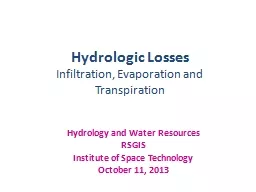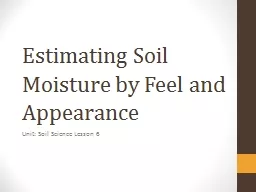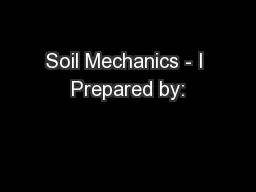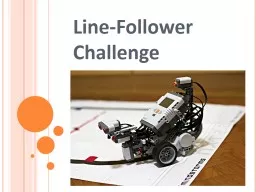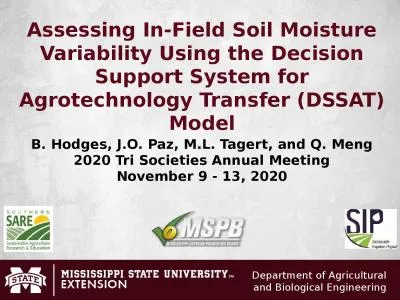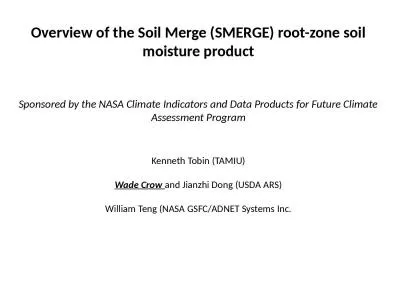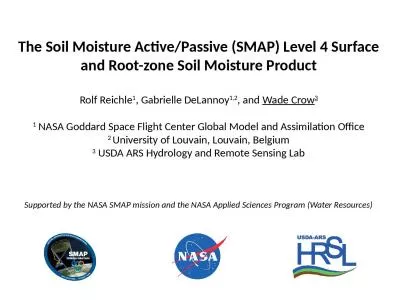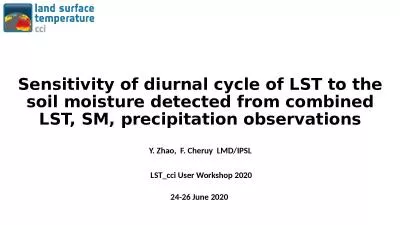PPT-Why does my soil moisture sensor read negative?
Author : lois-ondreau | Published Date : 2017-04-07
Improving accuracy of dielectric soil moisture sensors Douglas R Cobos PhD Decagon Devices and Washington State University Outline Introduction VWC definition
Presentation Embed Code
Download Presentation
Download Presentation The PPT/PDF document "Why does my soil moisture sensor read ne..." is the property of its rightful owner. Permission is granted to download and print the materials on this website for personal, non-commercial use only, and to display it on your personal computer provided you do not modify the materials and that you retain all copyright notices contained in the materials. By downloading content from our website, you accept the terms of this agreement.
Why does my soil moisture sensor read negative?: Transcript
Download Rules Of Document
"Why does my soil moisture sensor read negative?"The content belongs to its owner. You may download and print it for personal use, without modification, and keep all copyright notices. By downloading, you agree to these terms.
Related Documents

